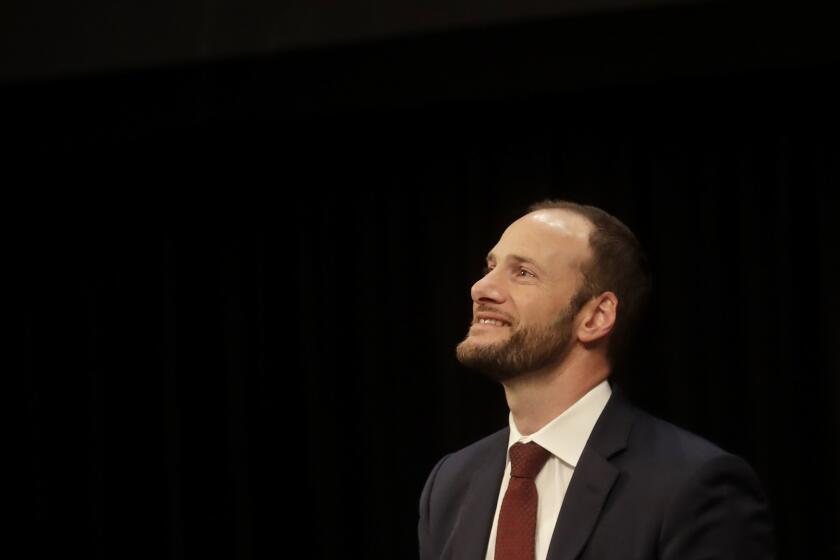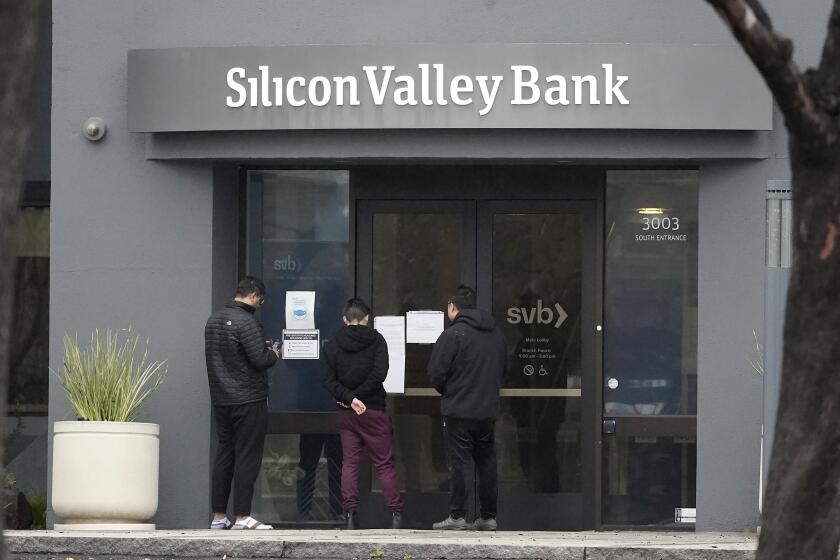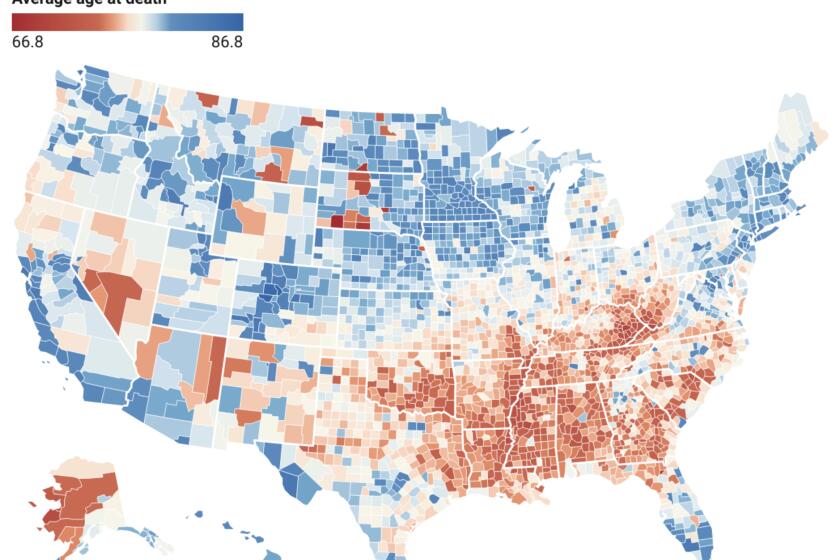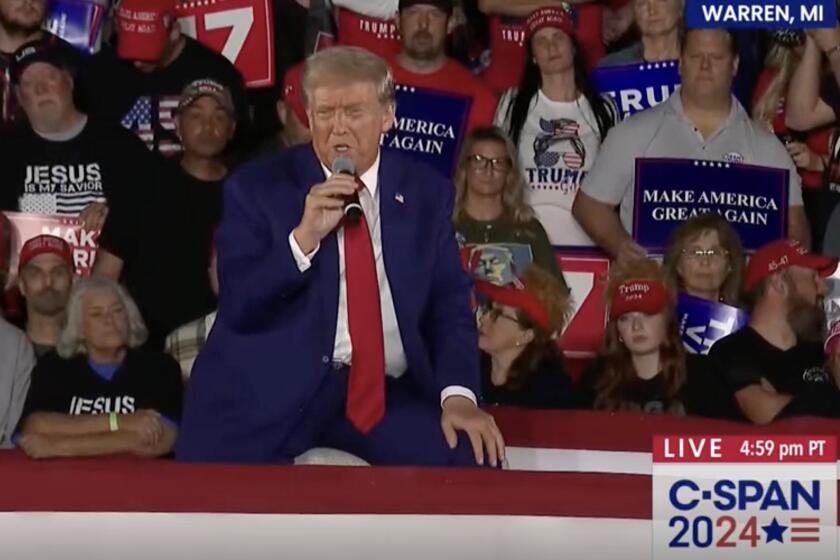Column: The Bob Lee killing in S.F. shows how crime reporting gets almost everything wrong
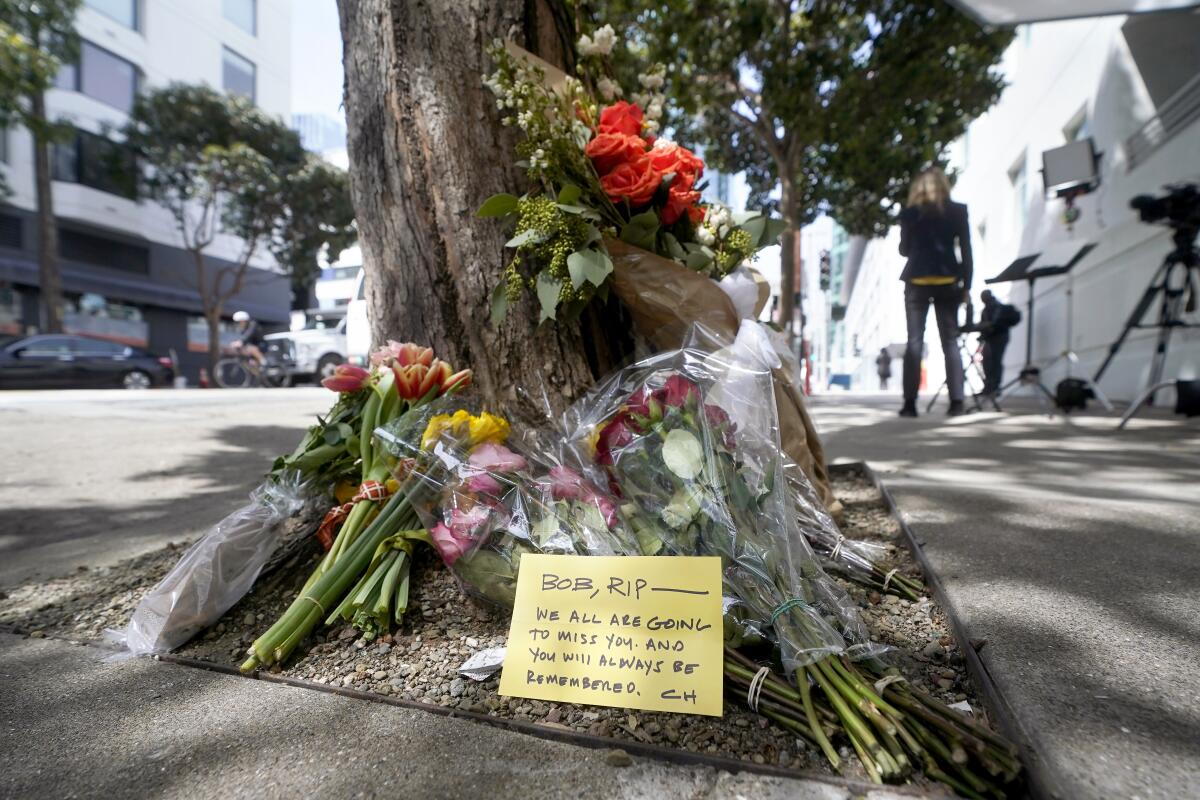
Rushes to judgment seldom come at you any faster than the commentary about the killing of tech entrepreneur Bob Lee in a deserted neighborhood of San Francisco early on the morning of April 4.
The stabbing death of Lee was almost instantaneously taken as confirmation of an emerging narrative about the city — dirty, dangerous, unlivable. Lee’s friends and business acquaintances knew whom to blame: San Francisco’s liberal politicians.
“Chesa Boudin, & the criminal-loving city council that enabled him & a lawless SF for years, have Bob’s literal blood on their hands,” tweeted venture investor Matt Ocko, naming the progressive district attorney who was turned out of office in a recall vote last year.
When people talk about ‘crime,’ what they’re talking about is disorder in the form of homelessness and schizophrenia on the street and drug selling. They’re not talking about child sexual abuse or tax evasion or environmental pollution. Whenever there’s a toxic dumping story, it’s not seen as part of a crime wave.
— Alec Karakatsanis, civil rights lawyer
Elon Musk’s take on the incident, aimed at Boudin’s “tough on crime” successor as D.A., was widely quoted. “Many people I know have been severely assaulted,” he tweeted. “Violent crime in SF is horrific and even if attackers are caught, they are often released immediately. Is the city taking stronger action to incarcerate repeat violent offenders @BrookeJenkinsSF?”
Newspapers and cable news programs piled on. Not all jumped to the same conclusion as Ocko and Musk, but instead exploited the killing to remind readers and viewers of the “concerns” that had been aired over violent crime in the city, and how those had ostensibly led to Boudin’s recall.
Get the latest from Michael Hiltzik
Commentary on economics and more from a Pulitzer Prize winner.
You may occasionally receive promotional content from the Los Angeles Times.
As it turned out, of course, Lee’s stabbing death seems to have had nothing to do with street crime or prosecutorial laxity or coddled criminals or “repeat violent offenders.” The April 13 arrest of a fellow tech worker in connection with the crime suggests that the assault was the outcome of a dispute between Lee (who had moved to Miami) and the alleged assailant (an Emeryville resident) over Lee’s relationship with the latter’s sister.
Superficially, then, the initial coverage of Lee’s killing appears to be a case of what the great press critic A.J. Liebling once labeled “the futility of flapdoodle.” It’s what happens when uninformed or misinformed sources run wild, equipped with little but received wisdom.
That San Francisco was overrun by violent criminals was taken as gospel; a predawn killing in a deserted part of town was shoehorned into the prevailing narrative.
Never mind that the narrative itself is untrue. As my colleague Summer Lin reported, violent crime in San Francisco — homicide, rape, robbery and aggravated assault — peaked in 2013, and by 2020, the last year for which statistics have been released, cases had fallen by about 32%.
A descendant of a California land baron is unhappy about San Francisco’s condition. She blames Chesa Boudin and progressives. The facts say otherwise.
The city recorded 56 homicides in 2022, according to the Major Cities Police Chiefs Assn. But that was fewer than in other cities of a similar size, including Denver (88 homicides), Nashville (108) and Columbus, Ohio (140).
In fact, says civil rights lawyer Alec Karakatsanis, a close analyst of law enforcement narratives through his indispensable Copaganda Newsletter on Substack, San Francisco is one of the safest big cities in America.
“Once a news theme is generated,” Karakatsanis told me, “reporters and editors see everything through the prism of that theme. There’s a theme about disorder and drugs and homelessness in San Francisco which is not about whether those things are objectively true, but more about how our brains are processing discrete actual examples.”
As it happens, the killing of Bob Lee appears to conform more to the truth about violent crime — that it most often involves people who know each other rather than strangers on the street. But you wouldn’t know that from how the killing has been reported.
The problem is worse than simply the mischaracterization of a single high-profile crime. It’s part of a long-term phenomenon in which the public’s fear of random violence has been fed by law enforcement advocates to burnish the image of police as the only bulwark against a perilously unpredictable world.
The harvest has been a militarization of police forces, the creation of SWAT teams and the assembling of fleets of armored vehicles.
“The ‘stranger danger’ theme is very beneficial to police because it’s hard for police to make arguments to acquire military equipment and surveillance apparatus if most violent crime is committed by family members or friends,” Karakatsanis says. “It starts to feel like a social problem that requires a very different public health intervention.”
Depictions of American cities as hives of remorseless human predators have taken on a distinctly ideological cast in recent years. At first they were employed to push back against long-overdue progressive criminal justice reforms.
The Boudin recall was exploited as Exhibit A for the case that voters were exasperated with the disorder that reform had brought.
I compiled some of this commentary at the time:
“Most San Franciscans just realized that doctrinaire progressivism had become a suicide pact,” wrote Daniel Henninger of the Wall Street Journal, declaring an end to “a major city’s long transition to flowers-in-your-hair progressivism.”
Demands by the tech industry’s most vocal libertarians for a government bailout of Silicon Valley call to mind the old saw: The goal in business to privatize profits and socialize losses.
Yet there were few signs that voters actually opposed those reforms. In Alameda County across the bay, civil rights attorney Pamela Price was elected district attorney and Yesenia Sanchez won her race for sheriff without facing a runoff, despite espousing progressive reforms similar to Boudin’s.
The general public, moreover, agreed with many of Boudin’s signature policies, according to a poll taken shortly before the recall, including his efforts to protect worker rights, review past cases for possible wrongful convictions and end the practice of cash bail. His loss in the recall was more properly attributed to a focused campaign against him heavily financed by real estate developers and agents.
Pro-reform campaigns have continued to prevail, most recently in the election of Brandon Johnson as mayor of Chicago after a campaign in which he opposed the conventional anti-crime nostrum of hiring more police officers but advocated instead addressing the “root causes” of crime through citywide youth hiring, reopening mental health centers and investing in violence prevention.
In the current political cycle, urban crime has become an even more partisan issue. House Judiciary Committee Chairman Jim Jordan (R-Ohio) tried to play it for all it’s worth Monday by holding a hearing on violent crime in Manhattan, part of his campaign to interfere with the prosecution of Donald Trump by Manhattan Dist. Atty. Alvin Bragg.
Jordan’s effort fell flat, however, in part because Jim Kessler of the centrist think tank Third Way came to the witness stand armed with data showing that “New York City’s murder rate was 18% below the national average” and that the murder rate was 59% higher in Ohio than in New York and 251% higher in Louisiana, another red state.
“If we wanted a hearing about the ravages of crime,” Kessler asked, “why aren’t we in Baton Rouge or Louisville, where five people were murdered in the blink of an eye in a mass shooting at a downtown bank” on April 11?
The partisan cabaret of politicians like Jordan narrow the definition of “crime waves” to encompass categories that can be blamed, in the public mind, on a predatory underclass largely of Black perpetrators. That ignores crimes that are more commonly classed as “white collar” offenses — the victims of which are often low-income and minority people.
“In the elite liberal mind,” Karakatsanis says, “when people talk about ‘crime,’ what they’re talking about is disorder in the form of homelessness and schizophrenia on the street and drug selling. They’re not talking about child sexual abuse or tax evasion or environmental pollution. Whenever there’s a toxic dumping story, it’s not seen as part of a crime wave.”
After decades of increasing longevity, Americans are facing shorter life spans than their predecessors and their rich-country peers. In states where Republicans set the agenda, it’s even worse.
Accounts of “crime waves” such as what is ostensibly happening in San Francisco are dependent on discrete incidents that can be cited for their genuinely horrific effect on victims and their families; Jordan gave four such victims a platform at his hearing Monday. But they distort the actual situation. That’s not in the public interest.
News organizations and local politicians are often complicit in defining crime as face-to-face encounters among strangers. It’s rare for local political leaders to react to a high-profile violent attack by downplaying the gravity of a purported crime wave, lest they be saddled with that all-too-effective label of being “soft on crime.”
San Francisco politicians were unusual in pushing back against the image of their city as a violent hellhole in the aftermath of Lee’s killing.
“I do think it’s unfortunate that we’re seeing this narrative that San Francisco is some exceptionally violent place,” state Sen. Scott Wiener (D-San Francisco) said. “That’s not true.”
Added San Francisco Police Commissioner Kevin Benedicto: “Overall, if you look at the last five years and 10 years on a longer-term scale, crime is at a historic low.” The city, he said, “is unfairly portrayed as being in the midst of a crime wave that isn’t borne out of the data.”
They may have been willing to challenge the narrative because they perceived that it was being aired by outsiders on social media, not by their own constituents.
The killing of Bob Lee is that rare case in which the prevailing narrative was flatly and swiftly contradicted by subsequent events. But it’s unlikely that it will eradicate the impression that San Francisco has descended into chaos. The impression is too often repeated and too colorful. From the standpoint of public health and safety, that’s too bad.
More to Read
Get the latest from Michael Hiltzik
Commentary on economics and more from a Pulitzer Prize winner.
You may occasionally receive promotional content from the Los Angeles Times.
